Welcome to Petplan’s blog, a space where you can read up on the latest pet-news, find out interesting facts and tips about keeping your pets happy and healthy, and share your views on hot topics.
Refine articles by
clear searchCat bite abscesses: what to do
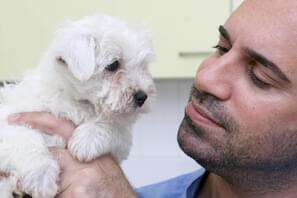
How to control your dog in the park
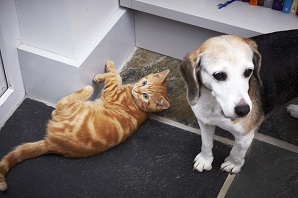
Are fleas messing up your life? Here's what to do
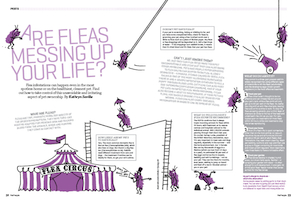
Things To Know About German Shepherds | Dog Breeds

Cats and kidney disease - what you really need to know

How to conquer 'little dog syndrome'

How to teach your dog to seek by scent
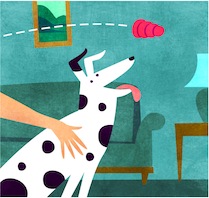
Ever wondered how police sniffer dogs learn their trade? The basics of seeking by smell serve as a stimulating game for your pet
Step 1
Buy a hollow KONG toy or similar and lock away all your dog's other toys. One person holds the dog while you throw the toy along the floor and say 'Seek'. Let him fetch, praise him for releasing it and repeat. Stop after 10 minutes. Do this three times daily for three days, locking away the toy in between. If your dog is uninterested, put dog treats in the toy and let him sniff it first.
Step 2
Now we 'up' the training. Show the dog the toy, throw it out of sight behind a chair, and say 'Seek'. If the dog finds the toy, throw the toy in increasingly hard-to-find places, but always praise him. Your dog is now using his nose more, as he can't see where you've thrown the toy.
Step 3
Now it's time to add more fun. Your partner holds the dog while you hold the toy visibly, walk into the next room and hide it. Walk back in, excitedly say, 'Seek' and let him go. Follow him, saying 'Seek' enthusiastically. Once he finds the toy, throw it across the room like a normal retrieve game a few times and praise him. Put the toy away until the next lesson.
Step 4
Repeat Step 3 but this time stay out of the room and let him bring the toy to you. Praise and repeat several times (but stop before he gets bored). Over time you can use other objects or hide the toy in a jacket pocket. Your dog will soon be doing what he truly loves: on a command, using his terrific sense of smell to track down a specific object.
What to do about your cat's runny eye

What to do with an unexpected litter
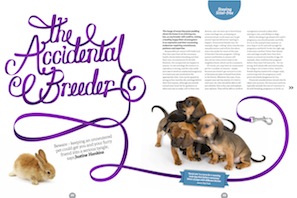
Beware - keeping an unneutered pet could get you and your furry friend into a serious tangle, says Justine Hankins. From the PetPeople magazine archive
The image of many tiny paws padding about the house is an enticing one, but, as any breeder will confirm, raising a healthy, happy litter of youngsters' is an expensive and time-consuming endeavour requiring commitment, patience and expertise.
Responsible pet owners will make sure that their pets have all the necessary health checks before breeding and that their own circumstances fit the bill. However, the unexpected can happen to anyone. In cats and dogs the instinct to reproduce is strong, and the only really sure way to avoid an unplanned pregnancy is to have your pet neutered at the appropriate time. Cats can be spayed as young as four months old, and dogs before their first season, although you should consult your local vet for guidance on when your pet is ready. Left to their own devices, cats can have up to three litters a year and dogs two, so keeping an unneutered pet could mean you've got several 'special deliveries' waiting to happen. Unneutered female cats, for example, begin 'calling' when they become sexually mature and will do this about every two weeks for much of the year if they don't become pregnant. Calling queens and bitches in season will also attract every entire male in the neighbourhood, which can be a nuisance.
Of course, you may have an unneutered pet for a number of reasons - maybe because you haven't got around to it yet, or because you plan to breed from them in the future. Whatever the case, if you suspect your pet has mated, it's vital to visit your vet, who should be able to tell you whether this is the case and explain your options. They will be able to confirm a pregnancy around 14 days after mating in cats, and 28 days in dogs.
Before deciding to go ahead with a pet's pregnancy, you should ponder carefully if it is in the animal's best interest. Is your dog or cat fit and well enough for pregnancy and birth? Is she the right age to become a mother? Given that female cats and dogs usually have their first season at around six months of age, for example, they could become pregnant before they reach full maturity - far too young, both physically and emotionally, for a dog or cat to have a litter. And if a female dog has mated with a larger male, continuing with the pregnancy could prove extremely dangerous for her.
Financial considerations should also be taken into account. Pet insurance policies typically exclude the cost of treatment to do with breeding, pregnancy or birth, so you should assess whether or not you can afford these bills, not to mention food costs and vets' fees after the birth. And do you have the time to care for a litter, plus somewhere for your pet to give birth and raise its young?
Mum's the word
If, after careful consideration, you decide to proceed with the pregnancy, remember that your pet will need a good-quality diet (specially formulated foods are available) which should be gradually increased to reflect her changing nutritional needs. Healthy animals generally cope very well with pregnancy, but it's important to stay in touch with your vet for advice on preparing for the birth and caring for your puppies or kittens. For example, you'll need to keep your pet clean and free from parasites - your vet will advise on which treatments are safe to use during pregnancy.
You can start looking for new homes for the kittens or puppies as soon as you know a litter is on the way. Begin by asking family and friends if they're thinking of getting a pet and, if you end up homing your puppies or kittens with strangers, make sure you ask the right questions (see opposite page) before you send them on their way. As the birth approaches, you'll need to provide your pet with a whelping or kittening box, which should be kept in a quiet spot. You can buy these ready-made or even make one out of a strong cardboard box. A kittening box should have a closed-off section to create a nest. You will also need some old towels (which should be disposed of after the birth) and some warm bedding.
When a cat is ready to give birth, she will begin nest-making and her breathing will increase. A dog will often become restless and pant or whimper. Your pet will probably not need veterinary supervision during the birth, but make sure you have your vet's phone number handy and that you know the arrangements for out-of-hours care. It's also a good idea to find out as much as you can about potential complications beforehand, just to make sure you'll be in the best possible position to spot any signs of trouble.
Early days of life
You should stay with your pet during the birth and be prepared to be near the litter during their first few days and weeks, providing food and water and a safe, peaceful environment for the mother, as well as being close to hand in case anything goes wrong.
In most cases, the mother will know instinctively how to look after her young, and it's best not to interfere unless there are concerns for the welfare of any of the litter. From three to four weeks, puppies and kittens can be given liquid or semi-solid foods in addition to their mother's milk. Kittens can then move on to solid food at four to five weeks, and puppies at five to six weeks.
As the animals get older, they'll become much more active and playful. Make sure that they're confined to a safe space - a spare room or utility room, for instance - without access to anything that could harm them. Puppies and kittens should ideally stay with their mother until they are at least eight weeks old.
With dogs, in particular, you have a responsibility to socialise the youngsters so they grow up to be happy, well-adjusted family pets. The new arrivals should be left in peace and quiet for the first three weeks, but at that stage you should be introducing them to new experiences such as visitors, grooming and handling. Whatever your circumstances may be, breeding cats and dogs is not something to be entered into lightly but, while it is generally a lot better for your pet if their pregnancy is a planned one, even an accidental breeder can be a highly responsible and successful one.
Breeding like rabbits
- A female rabbit reaches puberty at about four months, and could potentially become pregnant 10 times in a year, which would bring up to 24 babies, called kittens, into the world.
- Rabbits are naturally social animals, so they need to live with a companion.
- Keeping boys and girls apart is not easy. 'It can be very difficult to determine the sex of young rabbits, so owners should get help from an experienced person,'says the PDSA's Sean Wensley.
- Neutering male and female rabbits is the most sensible option unless you have a keen interest in breeding and showing fancy breeds.
- For more information about breeding rabbits responsibly, contact the British Rabbit Council (www.thebrc.org).
Before you let them go:
You'll want to be sure your puppies or kittens are going to good homes. Here are some questions to ask potential new owners:
- Have you owned a dog or cat before?
- Do you know which vet you'll register with?
- Do you need permission from a landlord to keep a pet and, if so, have you sought this?
- Will the pet be insured and microchipped?
- Does everyone in the household want a pet?
- Do you already own any dogs or cats?
- Will a cat be able to venture outside?
- Will a dog have access to a garden?
- How long will a dog be left alone each day?
- Is there somewhere near your home that is suitable for dog walks?
- In the case of a dog or puppy, do you plan to take it to dog-training classes?
Help is at hand
Download our helpful advice pack at www.petplan.co.uk/newparent
Does your balding hamster need help?



